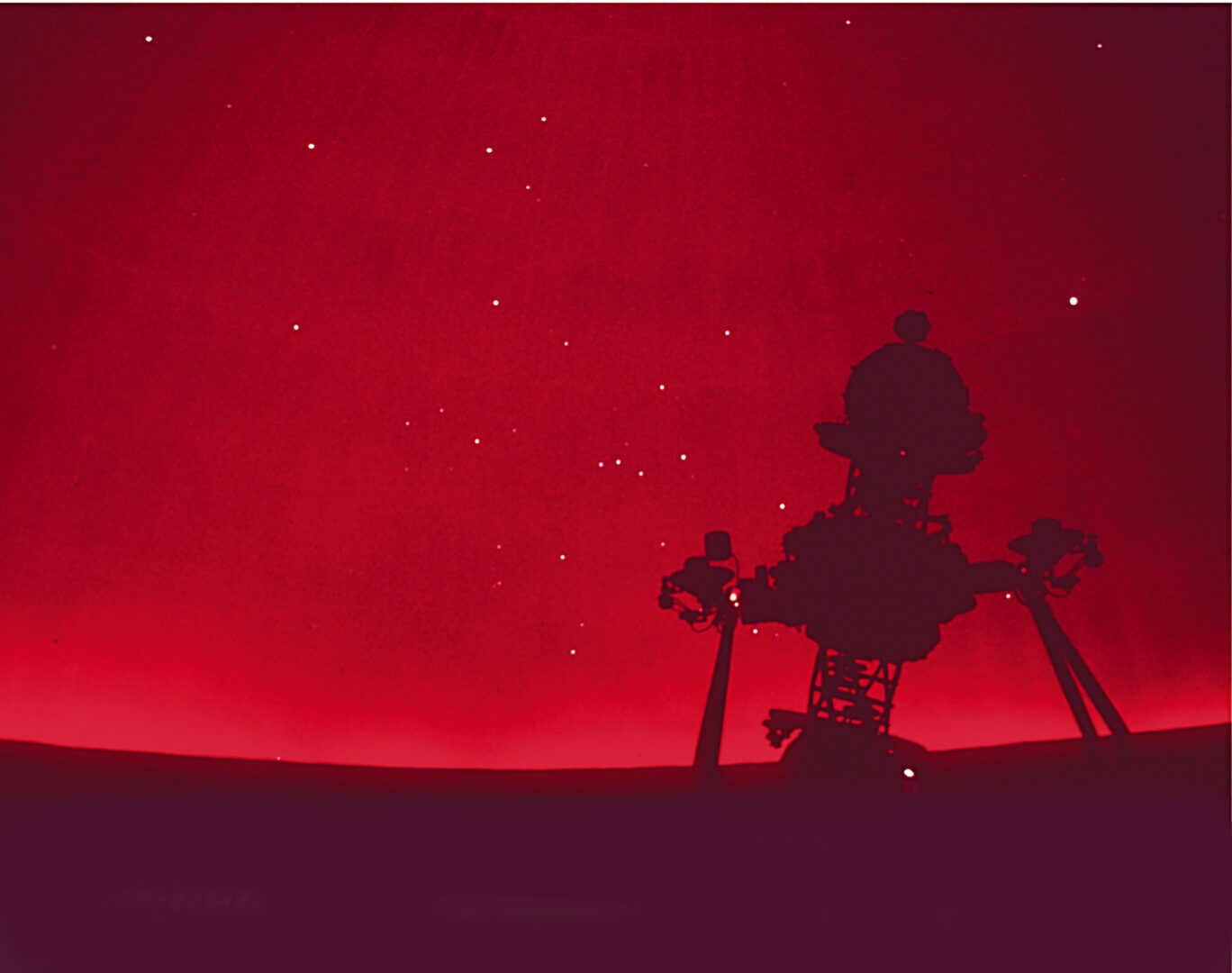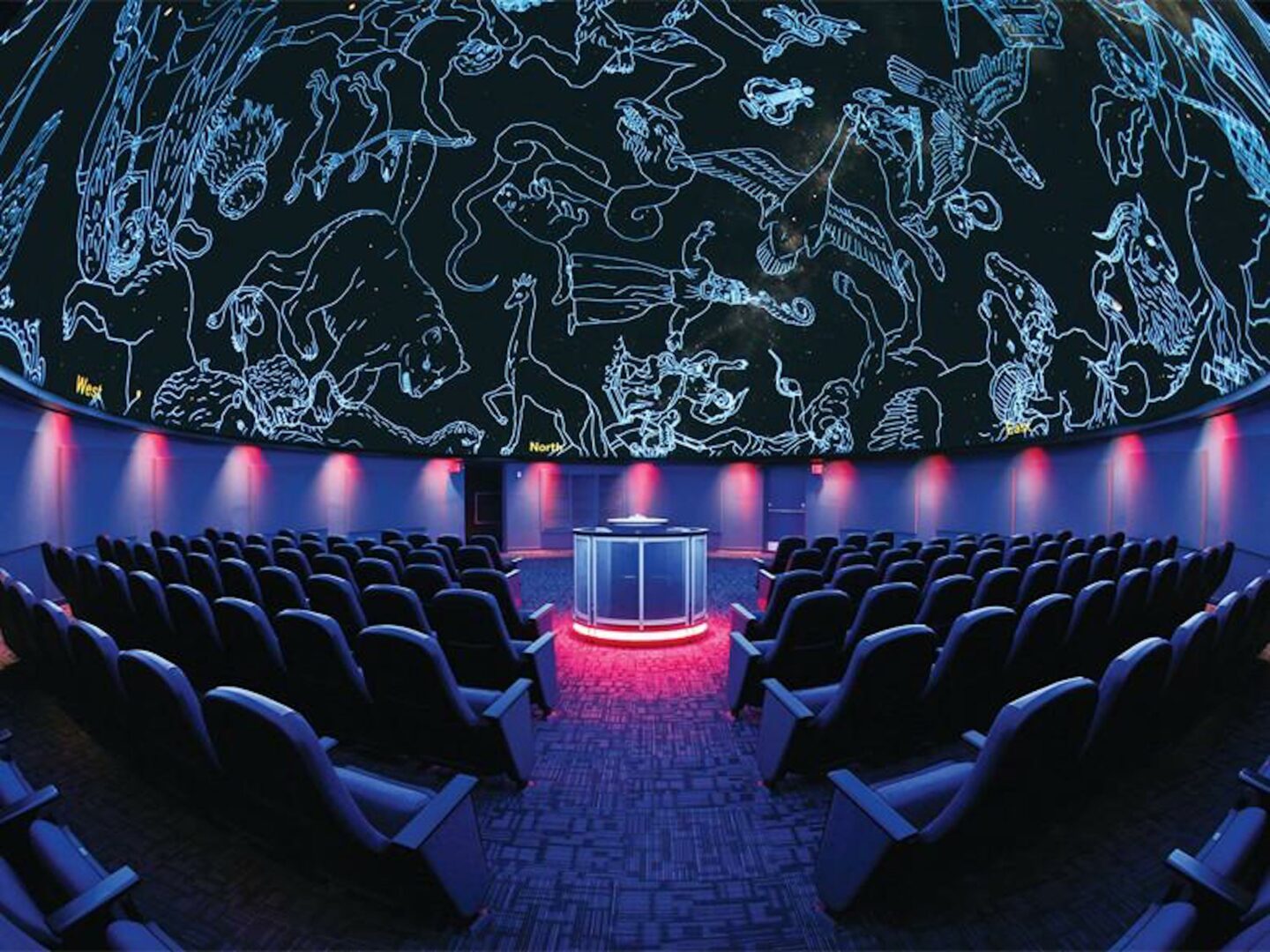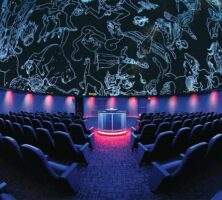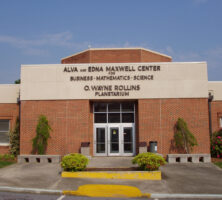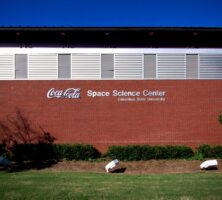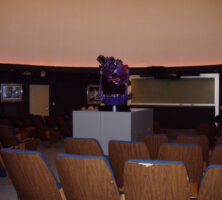Because Georgia has several major planetariums scattered throughout the state, the planetarium experience is within easy driving distance of most Georgians. Planetariums have revolutionized the way astronomy is taught, especially to young students and the general public.
Early History
Evidence suggests that the concept of the planetarium existed at least twenty centuries ago. Ancient maps of the sky, carefully placed on the outside of globes, were apparently constructed by astronomers teaching what they knew to those who wanted to learn. The modern planetarium, however, did not develop until the early twentieth century. In 1919 Walther Bauersfeld, director of the German firm Carl Zeiss Jena, came up with the idea of projecting the stars and other celestial objects on some sort of curved surface in a dark room. The Zeiss planetarium was opened to the public in 1926 in Jena, Germany.
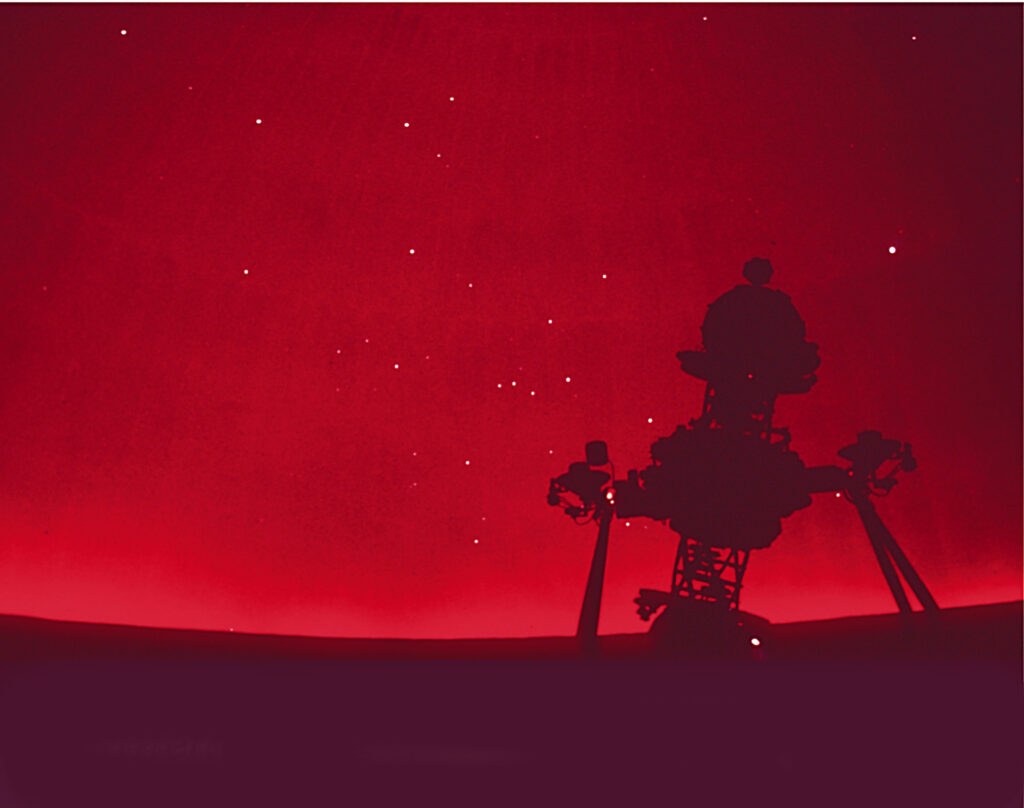
In Georgia, National Science Foundation funding during the late 1960s and 1970s gave a boost to planetarium construction, including expensive projects for public high schools as well as science centers and university physics departments. At the same time competitive production of turnkey (fully equipped) planetariums brought down ticket prices, and star projectors came within the reach of smaller schools and museums around the state.
Among the larger planetariums in Georgia are the Jim Cherry Planetarium at the Fernbank Science Center in Atlanta, the Coca-Cola Space Science Center in Columbus, the Mark Smith Planetarium at the Museum of Arts and Sciences in Macon, the planetarium at Valdosta State University, and the Rollins Planetarium at Young Harris College. Other planetariums are located at Georgia Southern University, Agnes Scott College, North Georgia College and State University, and the University of West Georgia. The Wetherbee Planetarium and Science Discovery Center are located in Albany at the Thronateeska Heritage Center. The Muscogee County School District also has a planetarium.
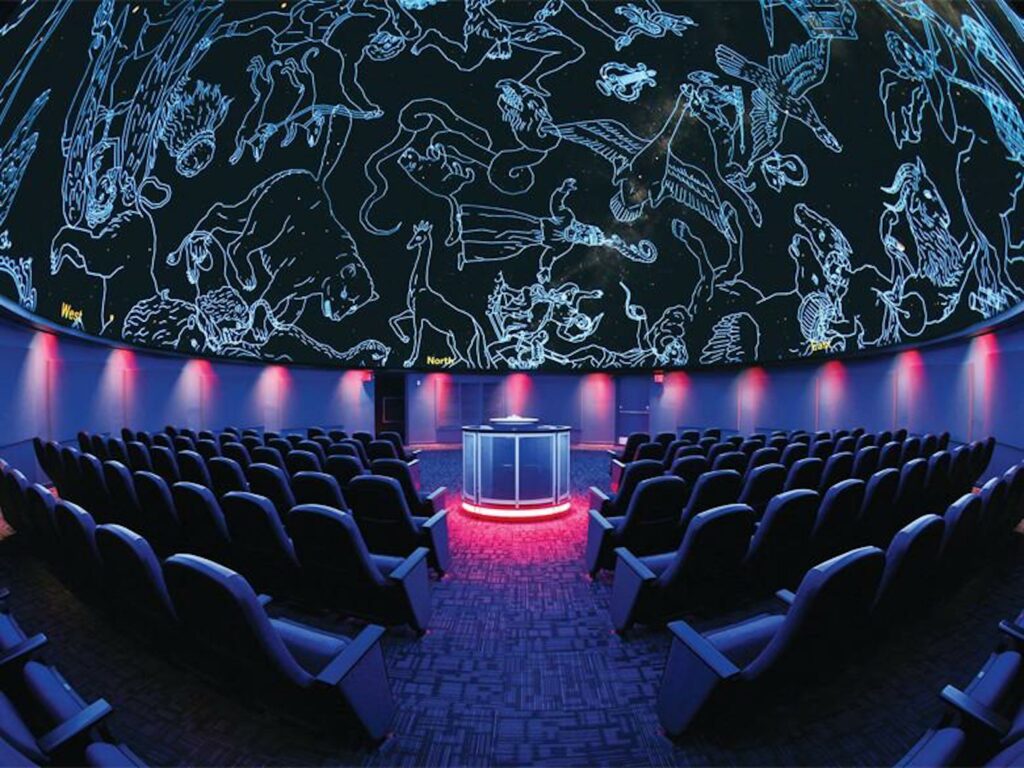
Planetariums in Education
In 1967 one of the earliest first-class planetariums in Georgia was erected at the Fernbank Science Center. It was financed by philanthropic gift and by National Defense Education Act matching funds (half federal and half local) and the DeKalb County Board of Education. The center’s mission is to enhance Georgia’s public and private school curriculums.
The Valdosta State University planetarium was also opened in the late 1960s; its shows are staffed by students under the direction of a faculty member. Valdosta State is one of only three universities in the state to offer an undergraduate degree in astronomy. (About ninety-six universities in the country offer such a degree.) Among the newest planetariums in Georgia is the Coca-Cola Space Science Center at Columbus State University, which opened in 1996. Like Fernbank, the Columbus facility houses an observatory, offers astronomy classes, and sponsors mobile astronomy programs.
Planetariums are a powerful resource and act as laboratories for public school science educators and for universities that offer astronomy courses. Skies can be set back in time to demonstrate triple conjunctions or eclipses that happened long ago. With many of the newer digital planetariums, it is possible to “travel” through the stars and in and around complex stellar arrangements in ways that make the experience seem three-dimensional and far less abstract than studying photographs in a textbook.
Digital planetariums offer the option of showing more than just stars. They can be programmed to offer trips to the bottom of the oceans or down into the volcanoes of Hawaii. Specialized programs using lasers and computer animation allow audiences to journey through the human body. Newer digital planetariums offer far more program options, but the quality of the star field does not yet compete favorably with the older, more expensive optical machines, which continue to sell to a wealthier market.
Most planetariums have extensive astronomy programs for outdoor public viewing. These “star parties” are preceded by lectures and activities to help viewers identify the stars they will see. Audiences leave the planetarium armed with the information they need to find major stars, constellations, and planets on their own.
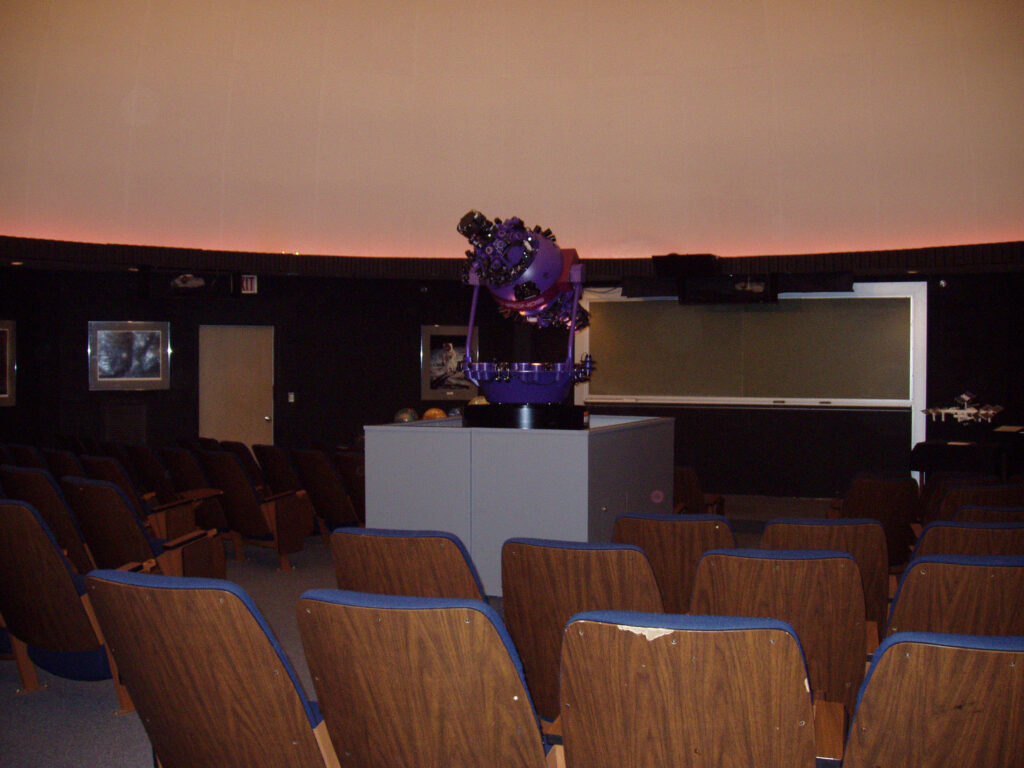
Planetariums that operate for the public are normally open during school hours and on weekends. Among planetariums there is a wide variety of program options. Some facilities offer very basic astronomy programs with no special effects or gadgetry, while other, more publicly oriented facilities may offer elaborate productions involving months and even years of preproduction. Contemporary planetarium programs may be complete with animations, laser graphics, state-of-the-art sound, and specially commissioned music.
Professional Associations
The Southeastern Planetarium Association (SEPA) is a professional organization formed to support planetariums and staff in the Southeast. Made up of professional astronomers and science educators, SEPA helps set the standard for planetarium productions. The first meeting was held at the Fernbank Science Center in 1971. SEPA currently lists the Fernbank, Coca-Cola Space Science Center, Mark Smith Planetarium, and Rollins Planetarium as members from Georgia.
At least two Georgia planetariums, Fernbank and the Coca-Cola Center, belong to the International Planetarium Society, the largest group of planetarium professionals in the world. This group of more than 600 planetariums shares astronomy and space-science resources with astronomy educators around the world. There is also a Georgia consortium of planetariums, which meets regularly to discuss new trends and programming opportunities. In some instances they team to produce new programs that can be sold or given to smaller institutions.





